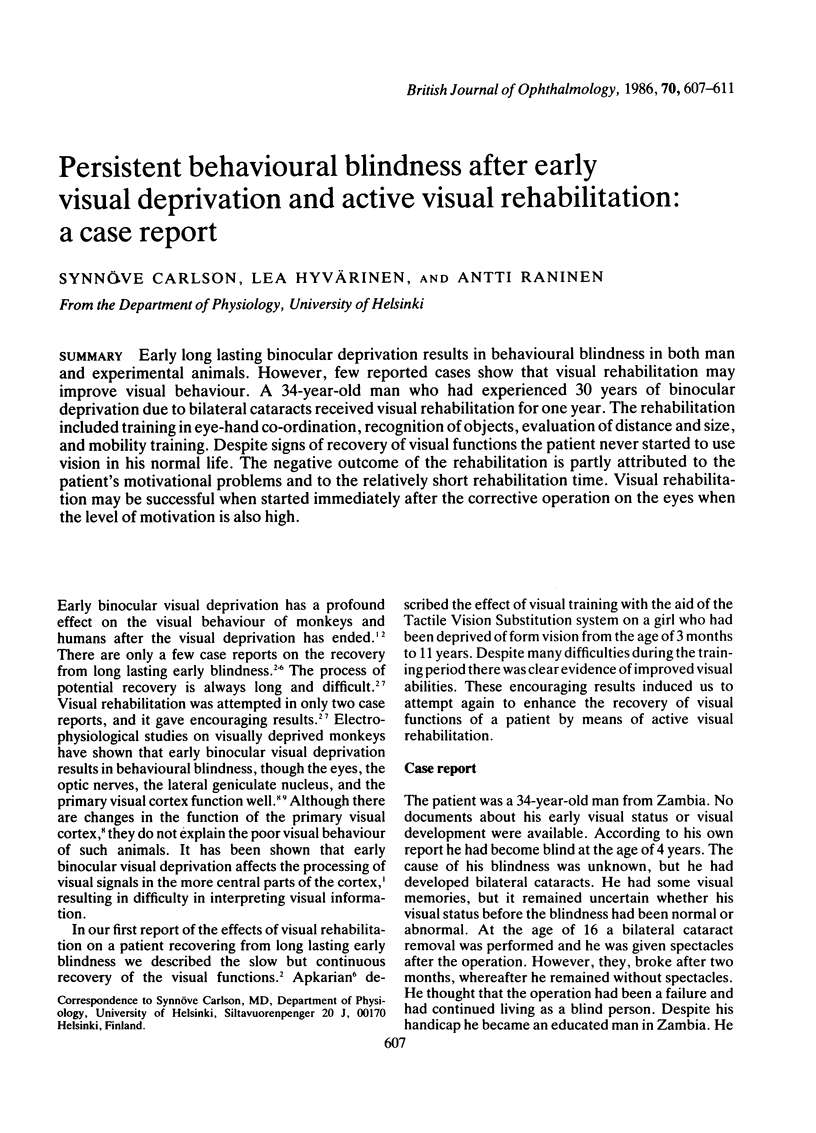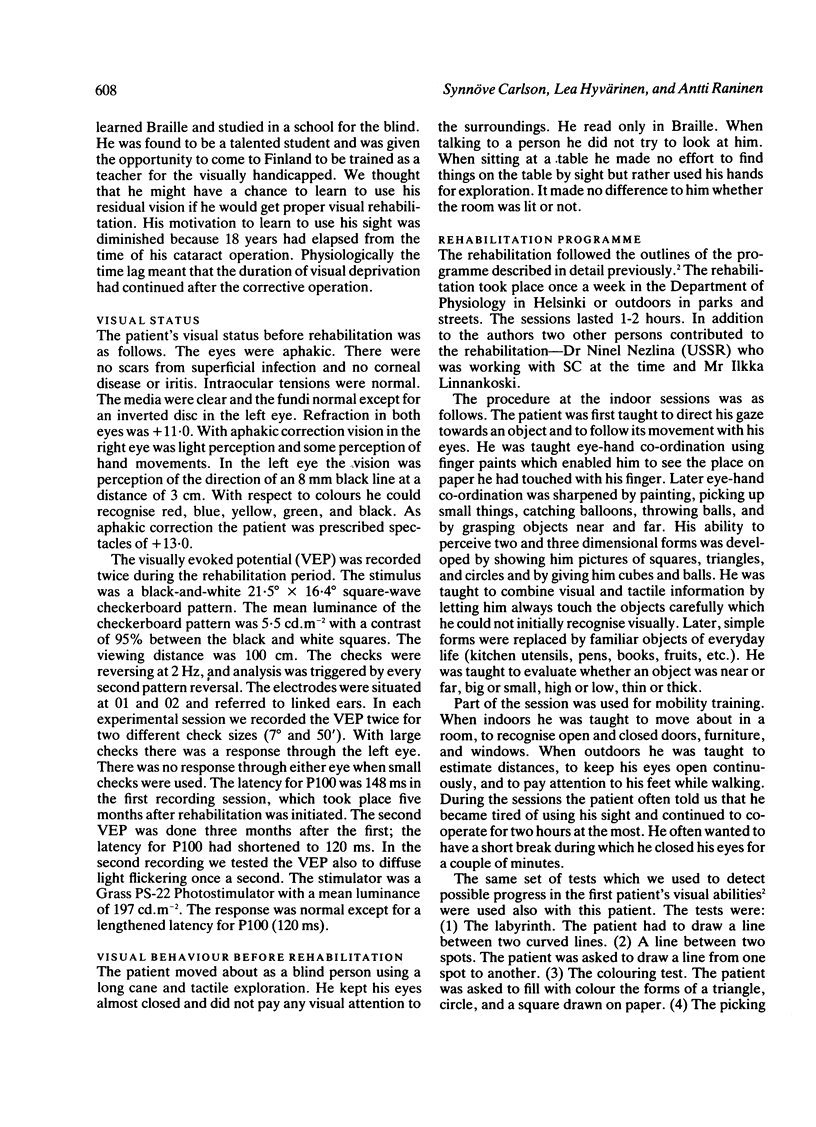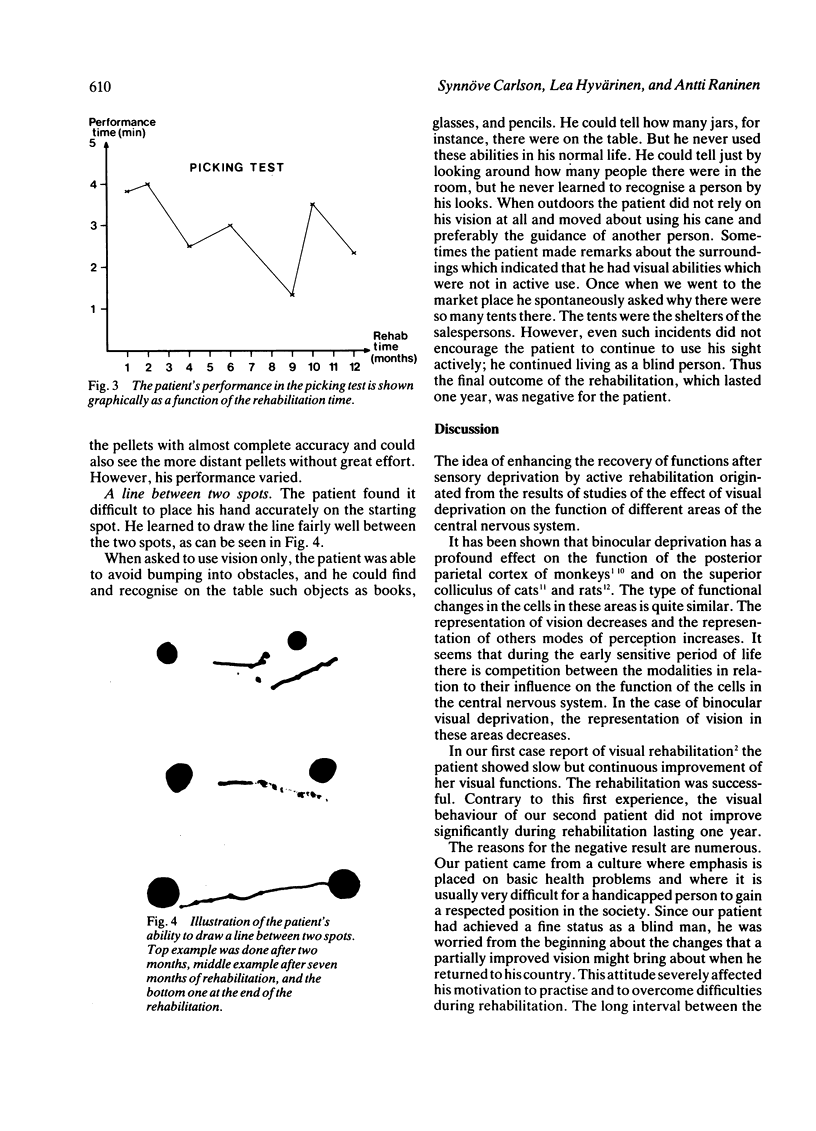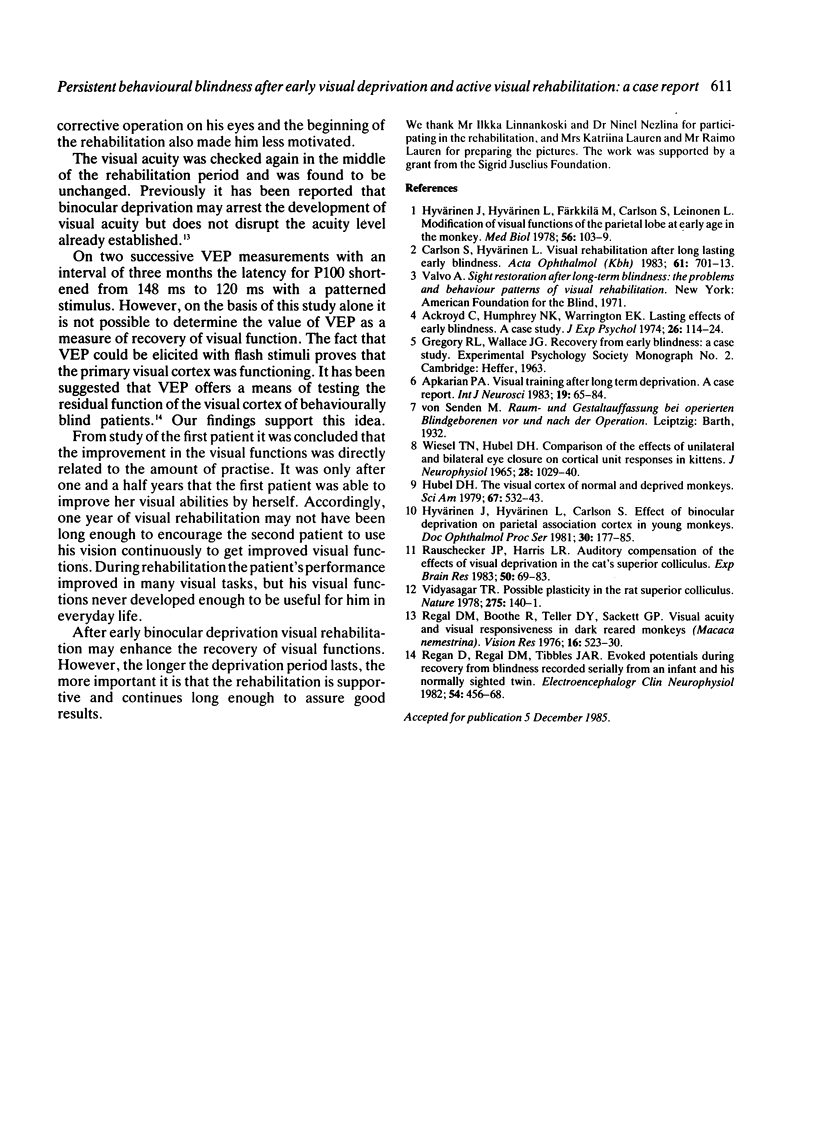Abstract
Early long lasting binocular deprivation results in behavioural blindness in both man and experimental animals. However, few reported cases show that visual rehabilitation may improve visual behaviour. A 34-year-old man who had experienced 30 years of binocular deprivation due to bilateral cataracts received visual rehabilitation for one year. The rehabilitation included training in eye-hand co-ordination, recognition of objects, evaluation of distance and size, and mobility training. Despite signs of recovery of visual functions the patient never started to use vision in his normal life. The negative outcome of the rehabilitation is partly attributed to the patient's motivational problems and to the relatively short rehabilitation time. Visual rehabilitation may be successful when started immediately after the corrective operation on the eyes when the level of motivation is also high.
Full text
PDF




Selected References
These references are in PubMed. This may not be the complete list of references from this article.
- Ackroyd C., Humphrey N. K., Warrington E. K. Lasting effects of early blindness. A case study. Q J Exp Psychol. 1974 Feb;26(1):114–124. doi: 10.1080/14640747408400393. [DOI] [PubMed] [Google Scholar]
- Apkarian P. A. Visual training after long term deprivation: a case report. Int J Neurosci. 1983 May;19(1-4):65–83. doi: 10.3109/00207458309148647. [DOI] [PubMed] [Google Scholar]
- Carlson S., Hyvärinen L. Visual rehabilitation after long lasting early blindness. Acta Ophthalmol (Copenh) 1983 Aug;61(4):701–713. doi: 10.1111/j.1755-3768.1983.tb04361.x. [DOI] [PubMed] [Google Scholar]
- Hubel D. H. The visual cortex of normal and deprived monkeys. Am Sci. 1979 Sep-Oct;67(5):532–543. [PubMed] [Google Scholar]
- Hyvärinen J., Hyvärinen L., Färkkilä M., Carlson S., Leinonen L. Modification of visual functions of the parietal lobe at early age in the monkey. Med Biol. 1978 Apr;56(2):103–109. [PubMed] [Google Scholar]
- Rauschecker J. P., Harris L. R. Auditory compensation of the effects of visual deprivation in the cat's superior colliculus. Exp Brain Res. 1983;50(1):69–83. doi: 10.1007/BF00238233. [DOI] [PubMed] [Google Scholar]
- Regal D. M., Boothe R., Teller D. Y., Sackett G. P. Visual acuity and visual responsiveness in dark-reared monkeys (Macaca nemestrina). Vision Res. 1976;16(5):523–530. doi: 10.1016/0042-6989(76)90034-1. [DOI] [PubMed] [Google Scholar]
- Vidyasagar T. R. Possible plasticity in the rat superior colliculus. Nature. 1978 Sep 14;275(5676):140–141. doi: 10.1038/275140a0. [DOI] [PubMed] [Google Scholar]
- Wiesel T. N., Hubel D. H. Comparison of the effects of unilateral and bilateral eye closure on cortical unit responses in kittens. J Neurophysiol. 1965 Nov;28(6):1029–1040. doi: 10.1152/jn.1965.28.6.1029. [DOI] [PubMed] [Google Scholar]


